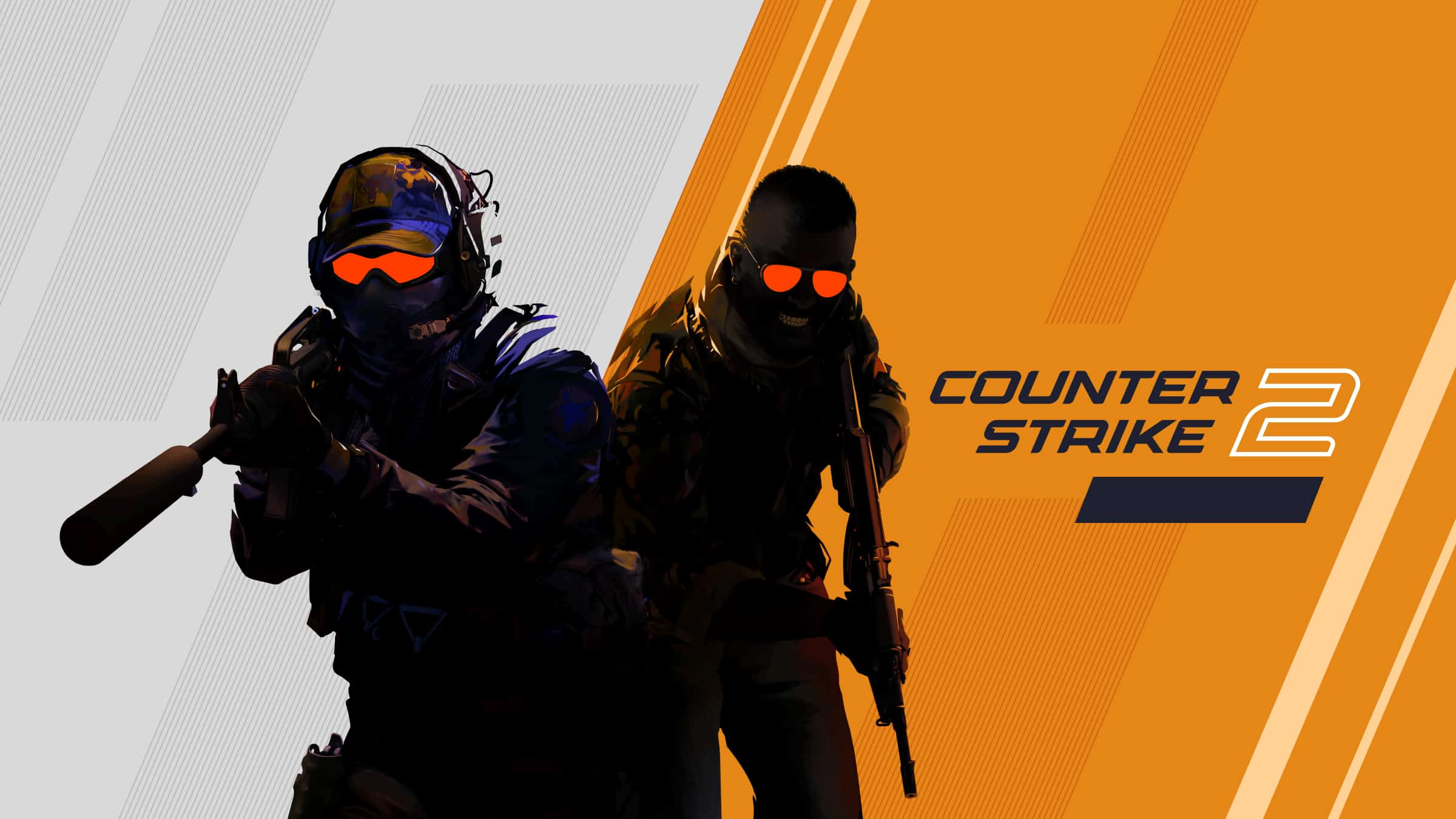Counter-Strike 2 has arrived, bringing significant changes to the popular first-person shooter. Many players are curious about its performance on different hardware setups. The GeForce RTX 4080 and RTX 4090 deliver over 400 FPS at 1440p resolution in Counter-Strike 2, offering the ultimate gaming experience.
CS2 uses Valve’s Source 2 engine, which improves graphics while maintaining the classic Counter-Strike feel. The game’s enhanced visuals and new features make it more demanding on hardware than its predecessor. Players looking to achieve high frame rates may need to upgrade their systems.
A wide range of graphics cards have been tested for Counter-Strike 2 performance. These benchmarks help players understand how their PCs will handle the game. For those wanting to check their system’s compatibility, there are online tools to compare PC specs against CS2 requirements.
| GPU | Average FPS at 1440p |
|---|---|
| RTX 4090 | 400+ |
| RTX 4080 | 400+ |
| RTX 3080 | 300+ |
| RX 6800 XT | 280+ |
Counter-Strike 2: GPU Performance Analysis
Counter-Strike 2 has arrived, bringing with it a slew of visual upgrades and performance enhancements thanks to the Source 2 engine. But how does it actually perform across a range of graphics cards? Let’s dive into the FPS analysis.
General Performance Trends
- Surprisingly Demanding: While CS2 might seem like a visually simple game, the Source 2 engine and enhanced effects can actually push GPUs harder than you might expect, especially at higher resolutions and refresh rates.
- CPU Bottleneck is Less Severe: Compared to CS:GO, Counter-Strike 2 seems to utilize modern CPUs more effectively. This means you’re less likely to be held back by your processor, and your GPU can truly shine.
- Optimization Still in Progress: As with any new release, there’s room for further optimization. Expect performance updates and driver improvements to further refine FPS in the coming months.
FPS Benchmarks Across GPUs
Here’s a general overview of how different GPU classes perform in Counter-Strike 2:
| GPU Class | 1080p (High Settings) | 1440p (High Settings) | 4K (High Settings) |
|---|---|---|---|
| Entry-Level (GTX 1650, RX 6500 XT) | 100-150 FPS | 60-90 FPS | 30-50 FPS |
| Mid-Range (RTX 3060, RX 6600 XT) | 180-250 FPS | 120-160 FPS | 60-80 FPS |
| High-End (RTX 3080, RX 6800 XT) | 280+ FPS | 200+ FPS | 100-140 FPS |
| Top-Tier (RTX 4080, RX 7900 XTX) | 350+ FPS | 280+ FPS | 160+ FPS |
Important Notes:
- These are approximate ranges, and actual FPS will vary depending on your specific CPU, in-game settings, and the map being played.
- Competitive players aiming for high refresh rates (144Hz+) will need a more powerful GPU, especially at 1440p and 4K.
- For 1080p 60 FPS gaming, even mid-range cards can deliver a smooth experience.
Factors Affecting Performance
- Resolution: Higher resolutions like 1440p and 4K put a significantly larger load on your GPU.
- Graphics Settings: Adjusting settings like shadows, textures, and effects can have a noticeable impact on FPS.
- MSAA: MSAA (Multisample Anti-Aliasing) is quite demanding in CS2. Consider using alternatives like FXAA or CMAA for better performance.
- Maps: Some maps are more demanding than others due to complex geometry, lighting, and effects.
Optimizing Your Settings
To maximize your FPS in Counter-Strike 2, consider these optimizations:
- Lower demanding settings: Start with “High” settings, then selectively lower options like shadows and effects if needed.
- Disable MSAA: Use FXAA or CMAA for a less performance-intensive anti-aliasing solution.
- Update your drivers: Ensure you have the latest graphics drivers from NVIDIA or AMD.
- Overclocking (Advanced): If you’re comfortable with it, overclocking your GPU can provide a small FPS boost.
Choosing the Right GPU for Counter-Strike 2
With a wide range of graphics cards available, selecting the right one for Counter-Strike 2 can be tricky. Here’s a quick guide to help you make an informed decision:
- Budget Gamers (1080p 60 FPS): An RTX 3050 or RX 6600 offer excellent value for smooth gameplay at 1080p.
- Competitive Players (1440p 144+ FPS): An RTX 3070 Ti or RX 6800 XT will provide the horsepower needed for high refresh rate gaming at 1440p.
- High-End Enthusiasts (4K High Refresh Rate): For the ultimate Counter-Strike 2 experience, an RTX 4080 or RX 7900 XTX is recommended.
Remember to consider your budget, desired resolution and refresh rate, and future gaming needs when making your choice.
CS2 Technical Overview
Counter-Strike 2 brings significant upgrades to the beloved franchise. The game leverages new technologies to enhance visuals and performance. These improvements aim to provide a more immersive and competitive experience for players.
Source 2 Engine Advancements
CS2 runs on Valve’s Source 2 engine. This upgrade allows for better physics simulations and improved rendering capabilities. The engine supports more detailed environments and smoother gameplay.
Source 2 enables advanced smoke physics. Smoke grenades now create volumetric clouds that interact realistically with the environment. This change adds tactical depth to matches.
The engine also supports improved networking. It reduces latency and provides more accurate hit registration. These enhancements are crucial for competitive play.
Graphics and Visual Enhancements
CS2 features major visual upgrades. The game now supports dynamic lighting and improved ambient occlusion. These changes create more realistic and atmospheric environments.
Textures receive a significant update. Higher resolution assets and improved shader models enhance surface details. Players can expect more visually appealing weapon skins and character models.
The game now supports higher refresh rates. This change benefits players with high-end monitors. It allows for smoother motion and potentially faster reaction times.
Benchmarking Methodology
Benchmarking CS2 involves measuring frame rates across various hardware configurations. Tests typically use standardized time demos to ensure consistent results.
Frame rates are recorded at different resolutions and graphics settings. This data helps players optimize their setups for the best performance.
VRAM usage is another important metric. It indicates how the game performs on graphics cards with different memory capacities.
| Resolution | Average FPS | VRAM Usage |
|---|---|---|
| 1080p | 180 | 2.5 GB |
| 1440p | 120 | 3.5 GB |
| 4K | 60 | 5.0 GB |
Benchmarks also test different graphics APIs. CS2 supports both DirectX 11 and Vulkan. Comparisons between these APIs help identify the most efficient option for various systems.
Hardware Performance & Benchmarks
Counter-Strike 2 pushes hardware to its limits. Graphics cards play a crucial role in frame rates while CPUs and system memory also impact performance. Let’s examine how different components affect gameplay.
Graphics Cards Analysis
NVIDIA GPUs dominate Counter-Strike 2 benchmarks. The RTX 4090 delivers exceptional performance, often exceeding 500 FPS at 1440p. RTX 4080 and 4070 models also perform well, easily surpassing 300 FPS in most scenarios.
AMD’s offerings like the Radeon RX 7900 XT compete favorably, though they trail slightly behind NVIDIA’s top-end cards. Older GPUs such as the GTX 1060 can still run the game, but struggle to maintain high frame rates at higher resolutions.
VRAM usage in Counter-Strike 2 is moderate. 8GB is sufficient for most settings, but 12GB or more allows for higher texture quality without performance penalties.
| GPU Model | 1080p FPS | 1440p FPS | 4K FPS |
|---|---|---|---|
| RTX 4090 | 600+ | 500+ | 300+ |
| RTX 4080 | 550+ | 450+ | 250+ |
| RX 7900 XT | 500+ | 400+ | 220+ |
| GTX 1060 | 150+ | 100+ | 40+ |
CPU Scaling and Utilization
CPU performance significantly impacts Counter-Strike 2 gameplay. The game benefits from high clock speeds and multiple cores. Intel’s Core i9-13900K and AMD’s Ryzen 7 7800X3D show excellent results in benchmark tests.
Counter-Strike 2 utilizes up to 16 CPU threads effectively. This multi-threading support ensures smooth gameplay on modern processors. However, single-core performance remains crucial for achieving the highest frame rates.
Overclocking can yield substantial gains. Some enthusiasts have pushed frame rates beyond 1000 FPS using extreme cooling methods and high-end hardware.
System Memory Impact
System memory plays a supporting role in Counter-Strike 2 performance. 16GB of RAM is recommended for optimal gameplay. This amount prevents stuttering and allows for smooth multitasking.
Faster memory speeds can improve frame rates, especially on AMD Ryzen systems. DDR5 RAM shows minor advantages over DDR4 in most scenarios.
While more RAM (32GB or 64GB) doesn’t directly boost FPS, it can help maintain consistent performance during long gaming sessions. This is particularly true for players who stream or run multiple applications alongside the game.
Gameplay Performance Analysis
Counter-Strike 2 brings major upgrades to graphics and gameplay. These changes affect frame rates, user interface responsiveness, and visual effects like smoke grenades.
Frame Rates and Quality Settings
Counter-Strike 2 offers improved visuals over its predecessor. This impacts performance across different hardware setups. Benchmark tests show varying results based on quality settings and resolutions.
At 1080p resolution with low settings, most modern GPUs achieve over 200 fps. Mid-range cards hit 144+ fps at medium settings. High-end GPUs can push 4K resolution at 60+ fps with high settings.
Quality presets affect frame rates significantly:
| Setting | Average FPS (1080p) |
|---|---|
| Low | 250+ |
| Medium | 180-220 |
| High | 120-160 |
Players should adjust settings based on their hardware and desired frame rate. Competitive gamers often prefer lower settings for maximum fps.
Impact of UI Updates on Responsiveness
Counter-Strike 2’s updated user interface aims to enhance responsiveness. The new UI reduces input lag and improves overall game feel.
Key UI improvements include:
- Faster menu navigation
- Quicker weapon switching
- More responsive buy menu
These changes lead to smoother gameplay and faster reaction times. Players report a noticeable difference in responsiveness compared to the previous version.
Reduced input lag is crucial for competitive play. It allows for more precise aiming and quicker reactions in firefights.
In-Depth Smoke Grenade Performance
Smoke grenades received a major overhaul in Counter-Strike 2. The new volumetric smoke system creates more realistic and dynamic effects.
Performance tests show that smoke grenades now have a larger impact on frame rates. Dense smoke areas can cause fps drops of 10-20% on some systems.
The new smoke system offers tactical advantages:
- More consistent smoke walls
- Realistic light interaction
- Gradual dissipation
These improvements come at a performance cost. Players with lower-end hardware may need to adjust settings to maintain stable frame rates during smoke-heavy situations.
GPU memory usage increases with the new smoke effects. 4GB VRAM cards may struggle at higher resolutions when multiple smoke grenades are active.
Optimization Techniques
Counter-Strike 2 offers several ways to boost performance. Players can tweak settings for their specific hardware and preferences. These optimizations can lead to smoother gameplay and higher frame rates.
Tuning for NVIDIA Reflex and G-SYNC
NVIDIA Reflex technology helps reduce system latency in CS2. Enabling this feature can make the game feel more responsive. Players should turn on NVIDIA Reflex in the game settings.
G-SYNC syncs the game’s frame rate with the monitor’s refresh rate. This eliminates screen tearing and stuttering. To use G-SYNC:
- Enable G-SYNC in NVIDIA Control Panel
- Set the game to use exclusive fullscreen mode
- Cap the frame rate slightly below the monitor’s refresh rate
NVIDIA Reflex can be set to “Enabled + Boost” for even lower latency. This may use more power and slightly reduce frame rates.
Leveraging AMD Technologies
AMD users can optimize CS2 performance with specific technologies. FidelityFX Super Resolution (FSR) can boost frame rates on supported graphics cards.
To enable FSR:
- Open game settings
- Navigate to Video Options
- Select FSR under Upscaling Method
AMD FreeSync, similar to G-SYNC, syncs the game with the monitor. Enable FreeSync in Radeon Settings and the monitor’s on-screen display.
AMD’s Anti-Lag feature can reduce input lag. Turn it on in the Radeon Software for competitive play.
Software Settings for Peak Performance
Adjusting in-game settings can significantly improve CS2 performance. Lower graphics settings often lead to higher frame rates.
Key settings to optimize:
- Resolution: Lower for more FPS
- Texture Detail: Medium or Low
- Shadow Quality: Low
- Model Detail: Low
- Effect Detail: Low
Disable Vertical Sync (V-Sync) for reduced input lag. Set Multisampling Anti-Aliasing Mode (MSAA) to 2x or off for better performance.
Audio settings can also impact performance. Use stereo audio and disable HRTF for a small FPS boost.
| Setting | Recommended Value |
|---|---|
| Resolution | Native or lower |
| Texture Detail | Medium/Low |
| Shadow Quality | Low |
| MSAA | 2x or Off |
| V-Sync | Disabled |
These optimizations should help players achieve smoother gameplay in Counter-Strike 2.
Frequently Asked Questions
Counter-Strike 2 benchmarks require specific hardware and software configurations. Understanding system requirements, testing methods, and performance metrics helps players optimize their gaming experience.
What are the system requirements to run Counter-Strike 2 benchmarks effectively?
Counter-Strike 2 demands more powerful hardware than its predecessor. A mid-range gaming PC with a dedicated graphics card is recommended for smooth gameplay and accurate benchmarking.
Minimum specifications include a quad-core CPU, 8GB RAM, and a GPU with at least 4GB VRAM. For optimal performance, 16GB RAM and a more recent graphics card are advised.
Which commands are used to perform benchmarks in Counter-Strike 2?
Counter-Strike 2 uses similar console commands to CS for benchmarking. Players can access the developer console and input commands to measure frame rates and other performance metrics.
Common benchmarking commands include “fps_max” to set frame rate limits and “net_graph 1” to display real-time performance data.
How do different GPUs perform when benchmarked with Counter-Strike 2?
GPU performance in Counter-Strike 2 varies widely based on card specifications and settings. High-end cards like the Nvidia RTX 4090 and RTX 4080 lead in benchmarks, delivering high frame rates at maximum settings.
Mid-range options such as the GTX 1060 and AMD Radeon RX 7900 XT offer good performance at lower settings. Budget GPUs may struggle with higher resolutions or graphical presets.
Is there an official benchmarking map or tool for Counter-Strike 2?
Currently, Counter-Strike 2 does not have an official benchmarking tool or map. Players often use in-game performance metrics and third-party software to measure frame rates and other statistics.
Some community-created maps designed for CS may be adapted for CS2 benchmarking purposes.
What CPUs are recommended for optimal Counter-Strike 2 benchmarking?
Counter-Strike 2 benefits from strong single-core performance. Recent Intel Core i5, i7, or AMD Ryzen 5, 7 processors are well-suited for benchmarking.
Higher clock speeds and newer architectures generally yield better results. A balanced system with a capable CPU and GPU ensures accurate benchmark data.
How can one accurately measure frame rate and performance metrics within Counter-Strike 2?
Players can use built-in tools and third-party software to measure Counter-Strike 2 performance. The game’s console offers basic frame rate monitoring.
External programs like MSI Afterburner or FRAPS provide more detailed metrics, including frame times and GPU usage. Some players record gameplay and analyze it frame-by-frame for precise measurements.
| Method | Pros | Cons |
|---|---|---|
| In-game console | Easy to use, no extra software | Limited data |
| Third-party tools | Detailed metrics, graphs | May impact performance slightly |
| Video analysis | Most accurate, frame-perfect | Time-consuming, requires editing skills |






